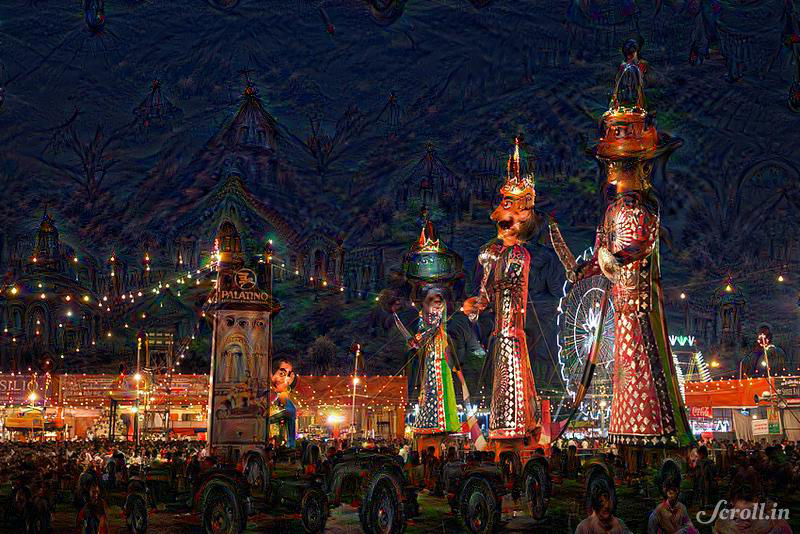What Google effectively showed us was a free-association game gone haywire, thanks to the vast majority of images that already exist in the Google bank. So its machines would look at a picture of pizza, and as it looked closer and closer, it started seeing things that looked like disembodied eyes and dog faces.
Go far enough into Deep Dream and practically any image turns trippy, as the computer attempts to connect it to something that it already knows. A simple example that Google pointed out was that of dumbbells or exercise weights. The computer was simply unable to separate these objects, because no one really takes pictures of just dumbbells, they click photos of people lifting them. So the computer started producing trippy images of weights with disembodied hands.

Then Google did something fun: it opened up the Deep Dream engine. Which meant anyone could put in a picture and see how the computer was attempting to examine it. You could also play with the layers, allowing the computer to pick the simplest layer of abstraction – where it is only trying to understand shapes and edges – to the furthest layer of free association, where despite the primacy of cats on the internet, dog faces just happen to keep turning up.
So we at Scroll decide to go find out what India would look like from the inside of a computer's dream. Brace yourselves. As an example, here's a picture of what the camel-mounted band of the Border Security Force would look like, when run through various layers of the Deep Dream.

It starts out looking pretty normal, but soon enough the camels are turning into dogs and there are weird faces turning up all over the place. And here's what the final layer on the BSF camel-mounted band finally looks like.
Original photo: Antônio Milena/Wikimedia Commons
Odd little things appear all over the place. Consider the Jagdambi Temple at Khajuraho. The statues of deities suddenly turn into birds.

Original photo: Antoine Taveneaux/Wikimedia Commons
Dusshera in Delhi introduces mountains into the sky and turns all the people's heads into wheels.

Original photo: Marji Lang/Flickr
The Gateway of India is still barely recognisable, with the pigeons in particular somehow getting human heads and faces on them.

Original photo: Ramnath Bhat/Flickr
Ditto for the Taj Mahal, which is particularly creepy because the original image, has almost nothing in it.

Original photo: Mukul Banerjee/Flickr
You're never going to look at an aarti the same way again, and we've always known that Varanasi is a place of wonders, but this is something else.

Original photo: U-suke/Wikimedia Commons
This eye-covered Gommateshwara Bahubali at Sravanabelagola will give you nightmares.

Original photo: Ilya Mauter/Wikimedia Commons
BEST buses don't do very well once put through the Deep Dream neural network, especially when they're in front of Mumbai's Chhatrapati Shivaji Terminus.

Original photo: Arlan Zwegers/Flickr
As if Raavan wasn't trippy enough, this Ravananugraha with Shiva and Parvati sitting above him will, er, surprise you.

Original photo: Gane Kumaraswamy/Wikimedia Commons
Deep Dream images, courtesy Rishi Ranjan.
Corrections and clarifications: This article originally included an image of iconography from Nepal. It has been deleted.













